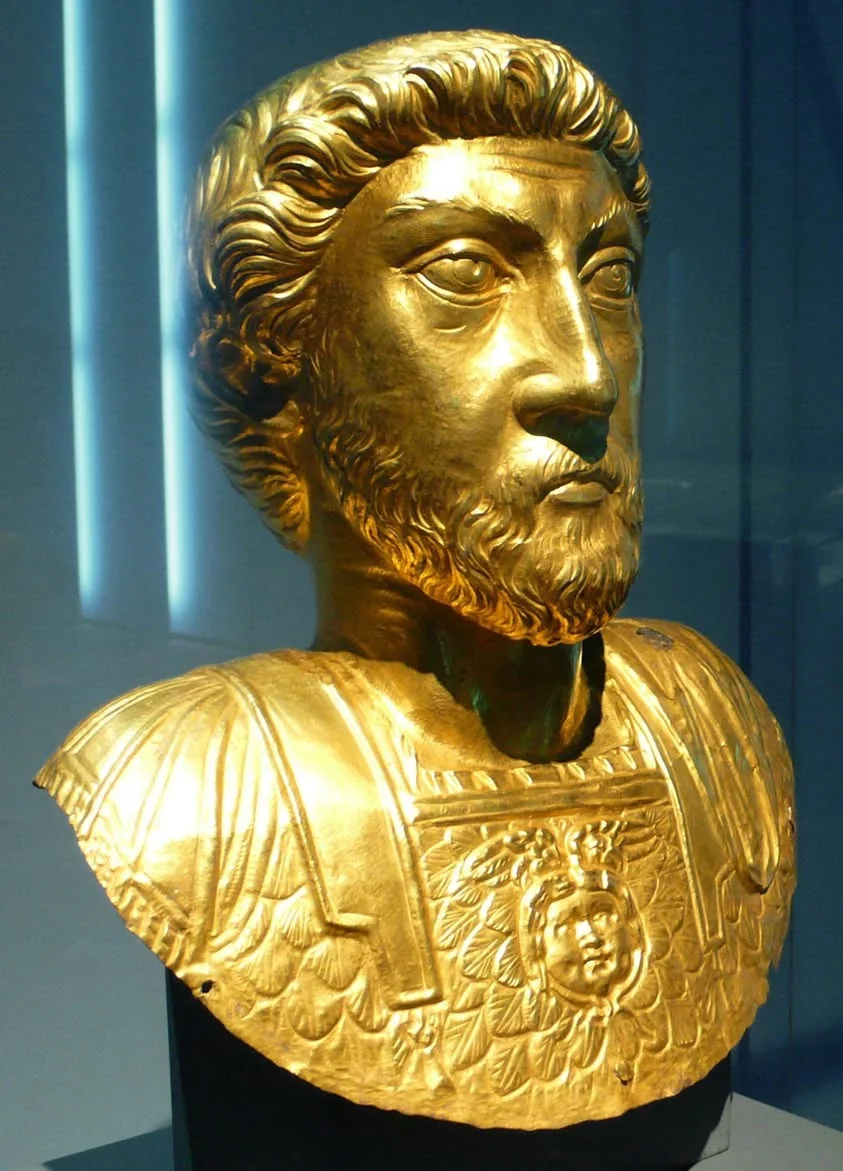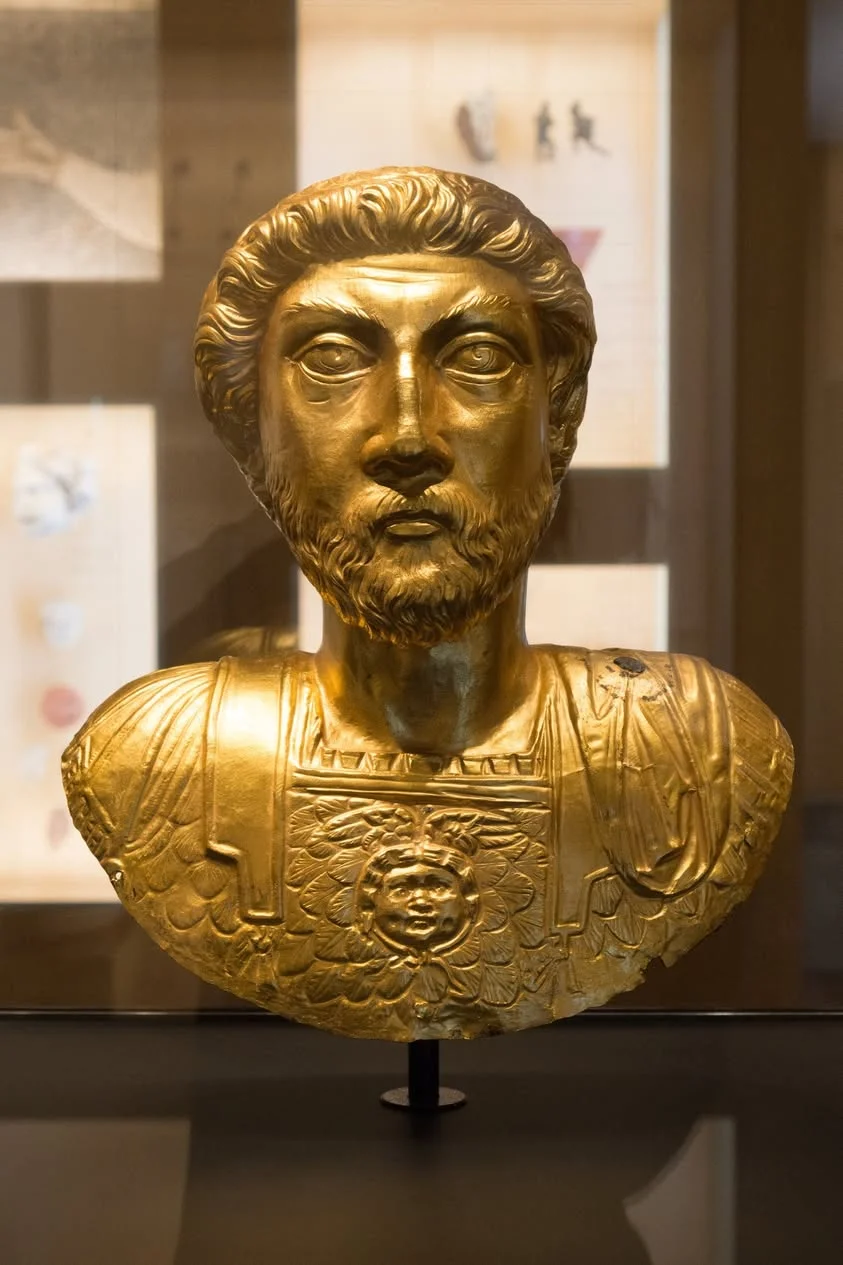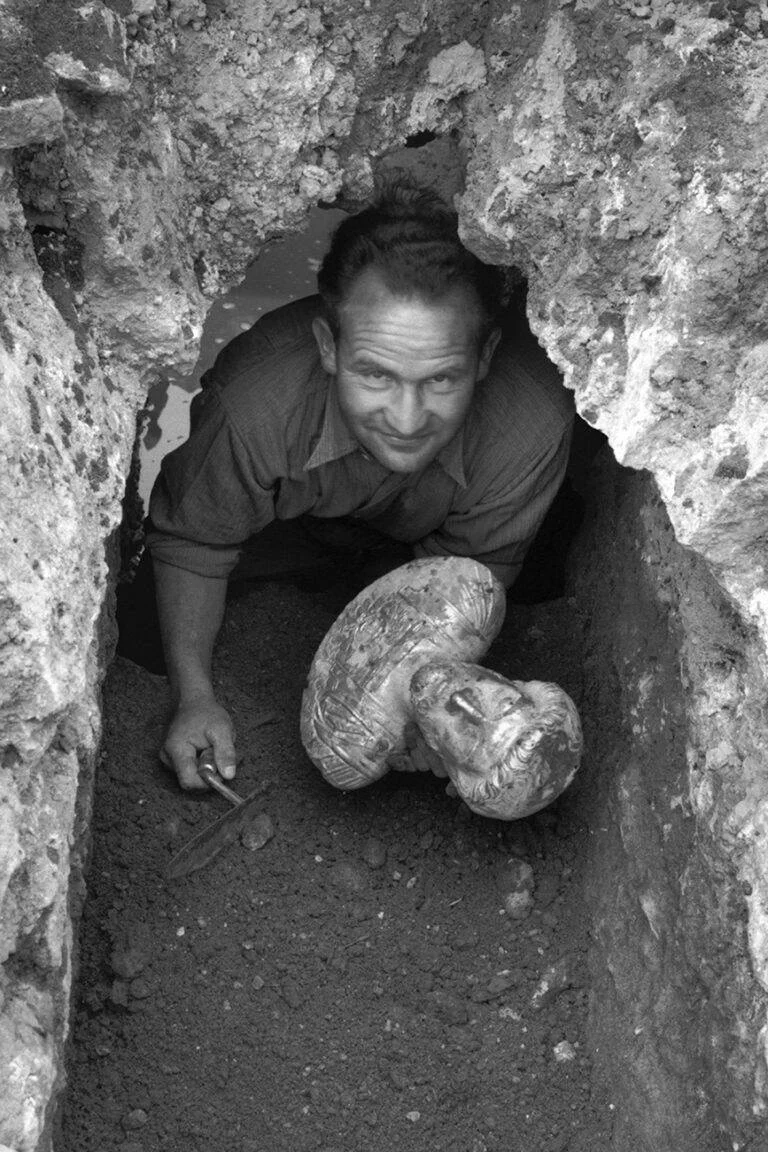In 1939, a dazzling discovery emerged from an unlikely place: a sewer in Avenches, Switzerland. A 33.5 cm gold bust, believed to depict the Roman Emperor Marcus Aurelius in his later years, was unearthed, captivating archaeologists and historians alike. Weighing 1.59 kilograms and crafted from 92% 22-carat gold, this masterpiece is the largest known metal bust of a Roman Emperor. Yet, a twist persists—some, like archaeologist Jean-Charles Balty, argue it portrays Emperor Julian instead. Hidden away in a Lausanne bank vault and rarely seen in public, this artifact remains one of archaeology’s most tantalizing mysteries. Let’s dive into its story, significance, and the debate that keeps the world guessing.

The Discovery: From Sewer to Spotlight
Imagine stumbling upon a treasure in the most unexpected place—a sewer. In 1939, workers in Avenches, Switzerland, uncovered a stunning gold bust while clearing a sewer system. This wasn’t just any find; at 33.5 cm tall and 1.59 kilograms, it’s the largest known metal bust of a Roman Emperor, crafted with exquisite detail to depict an aging figure, likely Marcus Aurelius, with a serene yet weathered expression. Made from 92% 22-carat gold, 2-3% silver, and 2-3% copper, the bust weighs 1,589.07 grams and has a volume of 82.25 cubic centimeters. Its craftsmanship is a testament to Roman artistry, but its discovery in a sewer raises questions: Was it hidden during a time of crisis? Lost in a moment of chaos? The artifact’s journey from the muck to a Lausanne bank vault is as intriguing as its origins, with public displays limited to just three occasions: 1996, 2006, and most recently at the Getty Villa in Los Angeles from May 31, 2023, to January 29, 2024.
The Debate: Marcus Aurelius or Emperor Julian?
The bust’s idenтιтy is where the real drama lies. Most scholars attribute it to Marcus Aurelius, the philosopher-emperor known for his Stoic wisdom and leadership during Rome’s golden age. The bust’s aged features align with depictions of Marcus in his later years, capturing a reflective, almost melancholic demeanor. However, archaeologist Jean-Charles Balty challenges this, proposing it represents Emperor Julian, the 4th-century ruler who briefly revived paganism in a Christianizing empire. Balty’s theory hinges on stylistic differences and historical context, but without definitive evidence, the bust remains a contested artifact. This debate fuels fascination, as the true idenтιтy may never be confirmed. One of only six surviving gold busts of Roman emperors, its rarity and mystery elevate its status as one of Switzerland’s most significant archaeological finds. An official replica at the Roman Museum in Avenches allows visitors to marvel at its grandeur, but the original’s seclusion in a bank vault adds to its enigma.

Why It Matters: A Golden Window into Rome’s Legacy
The gold bust is more than a beautiful object; it’s a portal to the Roman Empire’s grandeur and turmoil. Its 22-carat gold composition and mᴀssive size suggest it was a symbol of imperial power, possibly commissioned for a temple or public display. Its survival through centuries, only to be found in a sewer, hints at the chaotic decline of Roman influence in regions like Avenches, once a key Roman settlement. The bust’s limited public appearances—three times in nearly a century—make each viewing a rare event, drawing crowds to exhibitions like the recent one at the Getty Villa. Its cultural and historical weight is undeniable, offering insights into Roman artistry, imperial iconography, and the enduring allure of gold. For historians, it’s a puzzle; for the public, it’s a treasure that sparks wonder. The fact that it remains locked away, accessible only through a replica, only deepens its mystique.

The gold bust of Marcus Aurelius—or is it Julian?—is a testament to the enduring allure of ancient Rome. Discovered in a sewer, crafted from 22-carat gold, and shrouded in debate, it’s one of the most captivating artifacts ever found. Its rarity, size, and mysterious origins make it a crown jewel of archaeology, while its limited public displays keep it just out of reach, fueling curiosity. As it rests in a Lausanne bank vault, the world waits for its next appearance. Will we ever know its true idenтιтy? For now, it remains a golden enigma, sparking awe and debate. What do you think—does this bust depict Marcus Aurelius, or is Julian the real face behind the gold?